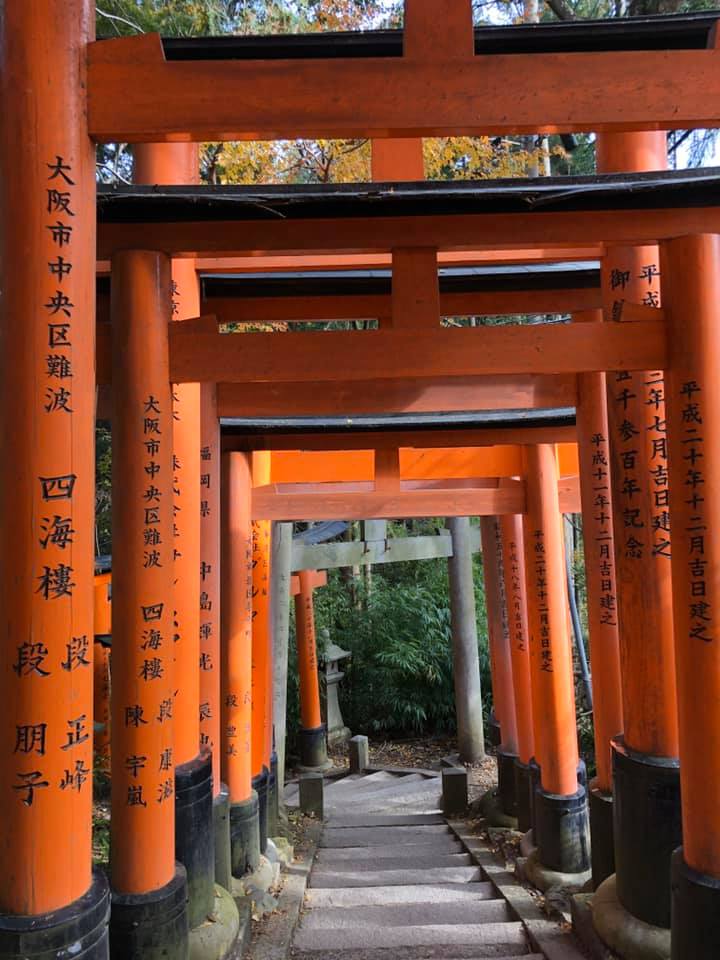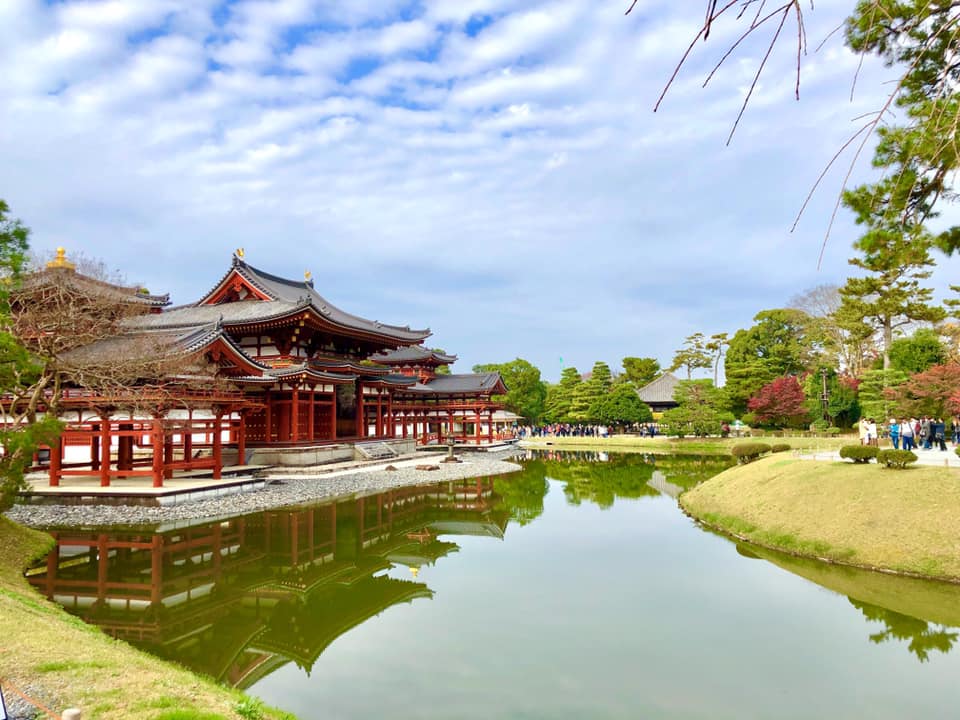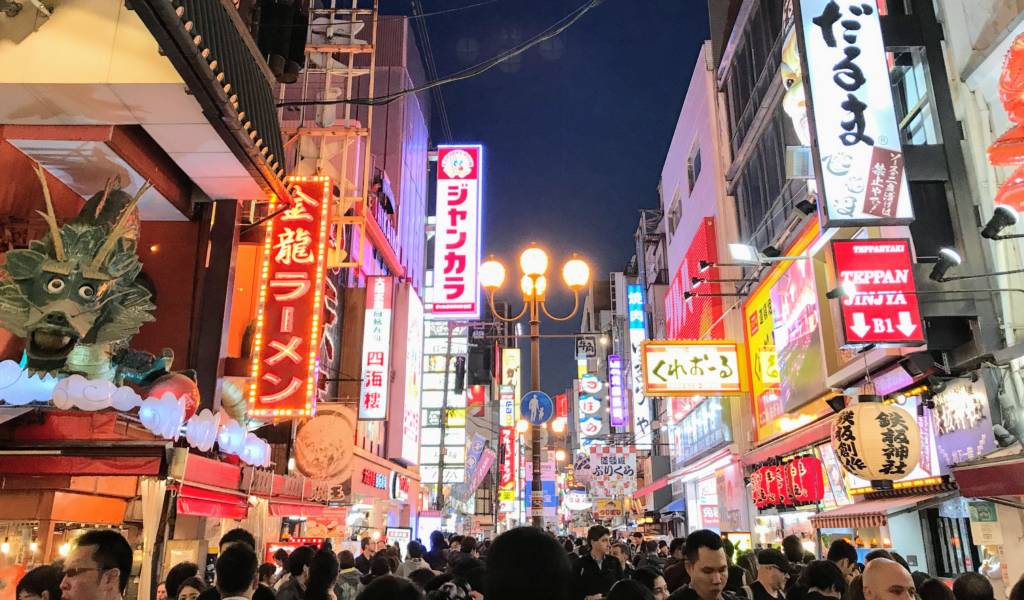
Fushimi Inari Shrine (伏見稲荷大社) is an important Shinto shrine in Kyoto. It is famous for its thousands of vermilion torii gates, which straddle a network of trails behind its main buildings. The trails lead into the wooded forest of the sacred Mount Inari, which stands at 233m and belongs to the shrine grounds. Fushimi Inari is among the top five temples to visit in Japan.
What is the difference between shrines, temples and monasteries? Some of you may ask.
- ● Shrines in Japan, are almost exclusively Shinto, and are dedicated to the worship of a single spirit or deity. Shintoism is a religion built on ceremonies and rituals, which take place within the shrines.
- ● Temples in Japanese are Buddhist places of worship. Buddhism may not have originated from Japan (like Shintoism does), but about 40% of the population of Japan are Buddhist with beliefs and practices of this religion deeply ingrained in everyday life.
- ● Monasteries in Japan, like temples, are usually also Buddhist. Some forms of Buddhism are monastic, largely practiced by monks or nuns in monasteries. In places such as these, monks study, live, and worship. Many of these are open to the public and you can choose to stay in a Japanese monastery too!

Arriving at the Fushimi train station, we noticed a statue of a fox. It is symbolic as foxes are thought to be Inari’s messengers, resulting in many fox statues across the shrine grounds. Fushimi Inari Shrine has ancient origins, predating the capital’s move to Kyoto in 794.

Being a popular tourist attraction in Kyoto, there were many tourists visiting this place. It was a short 10-minute walk from the train station to the main entrance of the temple grounds. Along the narrow streets, there were several stalls set up selling Japanese sells, trinkets and souvenirs.

As customary to entering any temple, there is the process of washing your hands and drinking the fresh spring water. Fill the ladle with water and pour some water on your left hand, then right hand. Next, clean your mouth by holding the ladle in your right hand again and pouring some water into your left hand and rinse lightly – don’t wash your mouth directly from the ladle! Finally, hold the ladle vertically, allowing for the remaining water to trickle down the handle and cleaning it. The Japanese would also make wishes and ring the bell, to announce their arrival to the temple.

We began our ascent to the highest point of Fushimi Inari. Walking past rows and rows of Torii gates painted in bright orange, we couldn’t help but wonder why. Apparently, the colour acts as a blockage or obstruction to magical powers and evil spirits. Furthermore, it expresses the lively motion of life, vermillion serving as protection against misfortune and calamity. It is typically found on ancient palaces, temples and shrines in Japan.

Do not be in a hurry to stop and take photos at the lower grounds, as you would only create a congestion behind you. We noticed a few groups of Asian tourists as big as ten people in a group, who stopped to take group photos, and everyone behind had to wait for them before we could all move forward. There is an abundance of these iconic Torii gates, so as you go further up the mountain, there would be sparse crowds and you can take your time to have all the photos that you want to.

The hike to the summit of the mountain and back takes about 2-3 hours, however, visitors are free to walk just as far as they wish before turning back. Along the way, there are multiple smaller shrines with stacks of miniature Torii gates that were donated by visitors with smaller budgets. Some of the torii gates have witnessed wear and tear, so there were staff doing repainting works. For those who had donated to a new gate, their family name would be engraved on the gate as well, in commemoration of their benevolent act.

At the midpoint, we were greeted with a panoramic view of Kyoto. Blended with the autumn leaves, it was a sight to behold. Many people stopped here to take photos. If you are feeling tired, you can make your way back down after reaching this point. Many hikers only venture as far as here, as the trails do not offer much variation beyond this point and the gate density decreases further. However, since this is probably my first and last time to Fushimi Inari, I wanted to make it all the way to the top.

The crowds became thinner as we proceeded towards the top. By the time we reached the highest point, 233m, we were slightly out of breath and kind of disappointed. The view here was not as beautiful as the one at the midway point. There was no sign saying that it is the highest point or that we have reached the goal. Even the signs in English at the small drink shop at the top explicitly told visitors not to ask if they have reached the summit. If you know, you know. So here is the view at the top of Fushimi Inari, home to a few important shrines.

After our morning exercise, we went back down the other side of the mountain so as not to backtrack. We walked past the midpoint, the lower section where it is now brimming with even more tourists and slowly headed back to the train station. We stopped by at some snack shops to get some food.

This is the Japanese rice crackers. Freshly made, they are really crispy and this stall sells them in all kinds of different flavours. We tried the spicy rice cracker. Some of the other rice crackers even had a symbol of the Torri gate imprinted on them. It would be a pity to eat them.

When we reached the train station, we came across another food stall, this time it was selling Inari sushi (rice stuffed inside deep-fried seasoned tofu pockets). We ordered two different flavours – mushroom and original to try and it was indeed delicious. Back home, I enjoyed eating inari sushi. Even though the filling was just rice, but the seasoned tofu pocket made it delicious.
How to get there?
Fushimi Inari Shrine is located just outside JR Inari Station, the second station from Kyoto Station along the JR Nara Line (5 minutes, 150 yen one way from Kyoto Station, not served by rapid trains). The shrine can also be reached in a short walk from Fushimi Inari Station along the Keihan Main Line.



One Reader Comment on “Fushimi Inari”
Comments are closed.